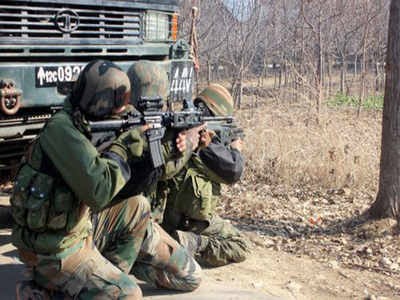Description

Disclaimer: Copyright infringement not intended
Context: About seven battalions of the Assam Rifles deployed in south Manipur have not received fresh ration in last 18 days with people in Meitei areas allegedly blocking supplies
About the Assam Rifles
- Assam Rifles is one of the six central armed police forces (CAPFs) under the administrative control of the Ministry of Home Affairs (MHA).
- The other forces of CAPF being the Central Reserve Police Force (CRPF), the Border Security Force (BSF), the Indo-Tibetan Border Police (ITBP), the Central Industrial Security Force (CISF) and the Sashastra Seema Bal (SSB).
- It is tasked with the maintenance of law and order in the North East along with the Indian Army and also guards the Indo-Myanmar border in the region.
History of the Assam Rifles
- Assam Rifles is the oldest paramilitary force.
- It was raised way back in 1835 in British India with just 750 men.
- The force was first known as Cachar Levy.
- It was raised as a militia to protect British tea estates and its settlements from the raids of tribes in the North East
- It was reorganised later as Assam Frontier Force as its role was expanded to conduct punitive operations beyond Assam borders.
- In 1870, existing elements were merged into three Assam Military Police Battalions, named as Lushai Hills, Lakhimpur and Naga Hills.
- The ‘Darrang’ Battalion was raised just before the onset of World War–I.
- Since Reservists were difficult to be called on short notice and Gurkha Battalions’ soldiers were on leave in Nepal, the Assam Military Police were tasked to take their place. Thus, this Force sent over 3000 men as part of the British Army to Europe and the Middle East.
- In 1917, recognising their work during the World War, the name of the Force was changed to ‘Assam Rifles’.

Their contributions
- They have gone on to fight in two World Wars, the Sino-Indian war of 1962 and used as an anti-insurgency force against militant groups in the North East.
- They operated in foreign land as part of the Indian Peace Keeping Force (IPKF) to Sri Lanka in 1987 (Op Pawan).
- They actively play a peacekeeping role in the North-Eastern areas of India.
- It remains the most awarded paramilitary force in both pre- and post-independent India. During World War I, the force was awarded seventy-six gallantry medals including seven Indian Order of Merit awards and five Indian Distinguished Service Medals for its contribution in Europe and the Middle East during the conflict.
- In World War II, after the lightning Japanese advance in 1942, the Assam Rifles fought a number of Independent actions behind enemy lines as the task of rear-area defence and rear-guard.
- During WW2 They also organised a resistance group—the Victor Force– on the Indo–Burmese border to counter the Japanese invasion and to harass the enemy line of communications.
Issues with the Assam Rifles
1.The dual control structure
It is the only paramilitary force with a dual control structure.
- While the administrative control of the force is with the MHA, its operational control is with the Indian Army, which is under the Ministry of Defence (MoD).
- This means that salaries and infrastructure for the force is provided by the MHA, but the deployment, posting, transfer and deputation of the personnel is decided by the Army.
- All its senior ranks, from DG to IG and sector headquarters are manned by officers from the Army.
- The force is commanded by a Lieutenant General from the Indian Army.
2.Denial of same benefits as Army
- MoD has better perks and retirement benefits, which are far higher compared to CAPFs under MHA. Moreover, Army personnel also retire early, at 35, while the retirement age in CAPF is 60 years.
3.Stagnation in their careers and issue of lack of promotion
- CAPF officers have recently been granted non-functional financial upgradation (NFFU) to at least financially address the issue of stagnation in their careers due to lack of avenues for promotion. On the other hand, Army personnel also get one rank one pension which is not available to CAPFs.
4.Both MHA and MoD want full control
- The MHA has argued that all the border guarding forces are under the operational control of it and so Assam Rifles coming under MHA will give border guarding a comprehensive and integrated approach.
- Army is of the opinion that the Assam Rifles has worked well in coordination with Army and frees up the armed forces from many of its responsibilities to focus on its core strengths and giving the control of the force to MHA or merging it with any other CAPF will confuse the force and jeopardise national security.
Conclusion
Given its contribution to both the arenas, it came to be known as the “right arm of the civil and left arm of the military”. Defence force with such a long history and contribution needs to be given due recognition with necessary benefits of both the ministries.
|
PRACTICE QUESTIONS
Assam Rifle has a long history dating back to the British Era and their contributions transcends the contribution of any other militaries in India with their diverse roles. In this regard discuss the role of Assam rifles in the security of India and enumerate the challenges faced by them.(250 words)
|
















